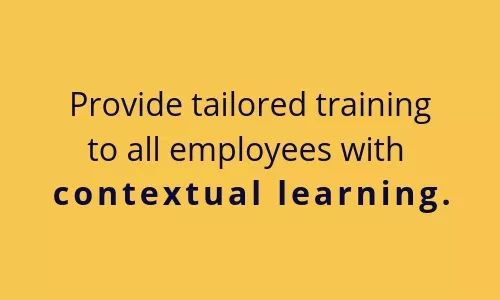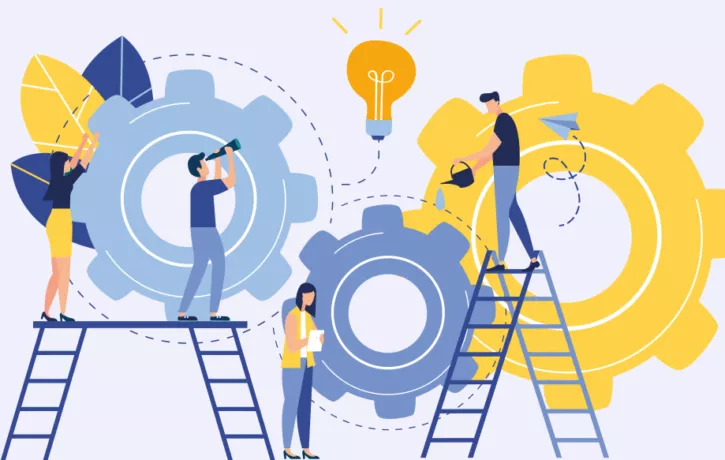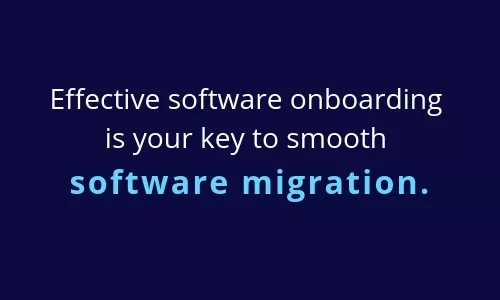The rate of digital progress is accelerating faster than ever before. As workplace tools continue to advance, so must employee capabilities.
Unless you take a proactive approach to increasing digital literacy, you will automatically stunt your business growth.
This is because today, businesses rely on digital tools to boost efficiency and innovation in every aspect, from the core business model, to operational efficiency, to the customer experience.
To achieve meaningful business growth, companies must close the employee skills gap and begin to migrate outdated digital infrastructures to updated platforms. However, the adoption of new technology doesn’t come without difficulties, namely, identifying the most effective training for employees.
Warning: Software migration challenges ahead
Adopting new technology across an entire enterprise is challenging work, no matter what industry.
Dive deeper: How Contextual Learning is Revolutionizing Employee Training
First, you have to identify the software you want to update, then you have to go through the process of migrating platforms, and finally, you have to onboard your staff.
Onboarding staff to new digital platforms is often the most difficult part of software migration initiatives. Due to knowledge gaps and varying levels of tech comfortability, effective training can be difficult to provide.
However, providing productive software onboarding is critical to achieving digital adoption. With the right strategy, resources, and support, your employees could learn to use your new systems much faster than you’d think.
How to solve employee training gaps
The most effective training option for employee onboarding during software migration is a digital training solution that provides contextual 
Powered by artificial intelligence, machine learning, and context-sensitive algorithms, solutions that enable contextual learning ensure users receive the information they need at exactly the right moment.
They follow users along as they work, providing a series of step-by-step guidelines as they begin using new applications. This allows the user to stay on the same screen as they learn, instead of needing to toggle between the software platform and an instruction manual.
A new approach to digital learning
Learning takes place in different ways and at different paces for everyone. Our brains are wired differently, which means knowledge retention happens for each individual through different modes of learning.
That’s why digital learning solutions that provide tailored support are the most effective. By providing experiential learning that caters to your user’s specific needs, the daunting task of migrating to an unfamiliar software is not quite as scary.
Change is hard in all situations, especially when it seems to threaten your workers’ ability to perform at the highest level. But if you provide them effective training resources, you will not only conquer your software migration, you will boost engagement and performance.
Learn more about how digital learning solutions with contextual guidance drive successful software migration in our eBook: How to Make Your Next Software Migration a Phenomenal Success.
_________
WalkMe’s Digital Adoption Platform (DAP) transforms the user experience in today’s overwhelming digital world. Using artificial intelligence, engagement, guidance, and automation, WalkMe’s transparent overlay assists users to complete tasks easily within any enterprise software, mobile application or website. Discover how a DAP can revolutionize your business — request a demo today.


